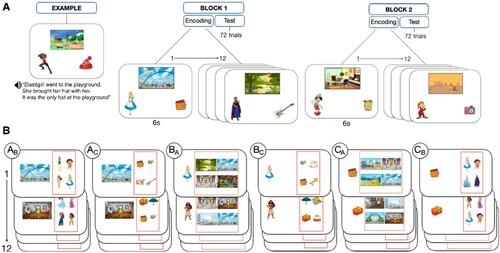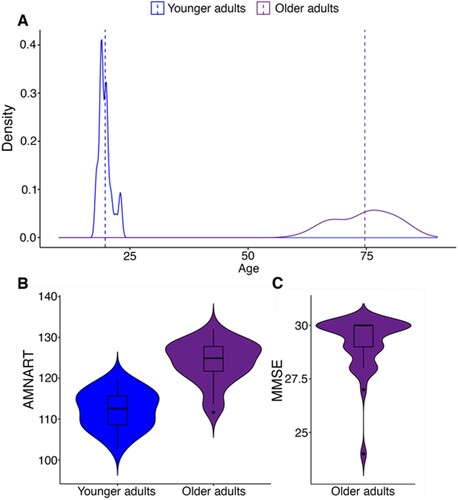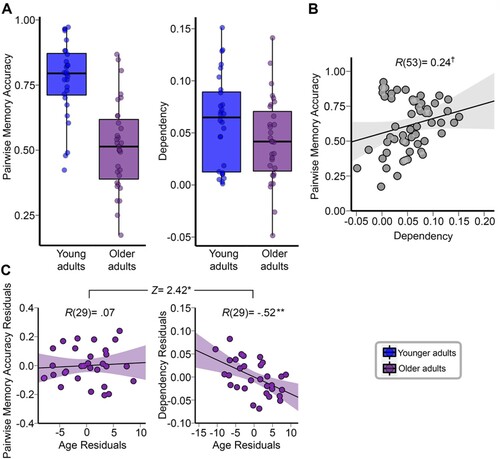Figures & data
Figure 1. A schematic depiction of the multi-element event task procedures. Prior to encoding, an example trial was introduced with a narrative to highlight every element and association within an event. At encoding, participants viewed 24 unique events presented in two encoding-test blocks, each comprised of 12 events (a). Examples of six test types per event in the test phase per block (b). Each element of a studied event took turn serving as the cue (shown on the left side of the screen) and the tested item (one of the four options shown inside a red outlined box). Letters A, B, and C denote the scene, person, and object element, respectively. The different test types are notated such that the first letter denotes the cue item, and the second subscripted letter denotes the tested item (e.g., AB denotes the retrieval type in which the scene element served as the cue, whereas the person element was the to-be-retrieved element).

Table 1. Contingency table for the predicted independent model for proportion of correct and incorrect cued recognition over the total number of events for elements B and C when cued by A.
Figure 2. A density plot of the age distribution in our samples (a). Distributions of verbal skills (measured by AMNART) in young and older adults (b, Left) and a distribution of MMSE scores among older adults (b, Right).

Figure 3. The distribution of pairwise relational binding performance and retrieval dependency separated by young and older adults (a). A scatterplot of a bivariate correlation between pairwise relational binding accuracy and dependency (b). Scatterplots depicting the relation between age and pairwise relational binding accuracy residuals after controlling for dependency, MMSE, and AMNART (c, Left), and the relation between age and dependency residuals after controlling for pairwise relational binding accuracy, MMSE, and AMNART (c, Right) among older adults. Significance notation: †p < .08, **p < .01.

Data availability statement
This experiment was not formally pre-registered. Experimental materials (https://osf.io/arphg/) and deidentified second-level data (https://osf.io/k97ur/) have been made publicly available through the Open Science Framework.
